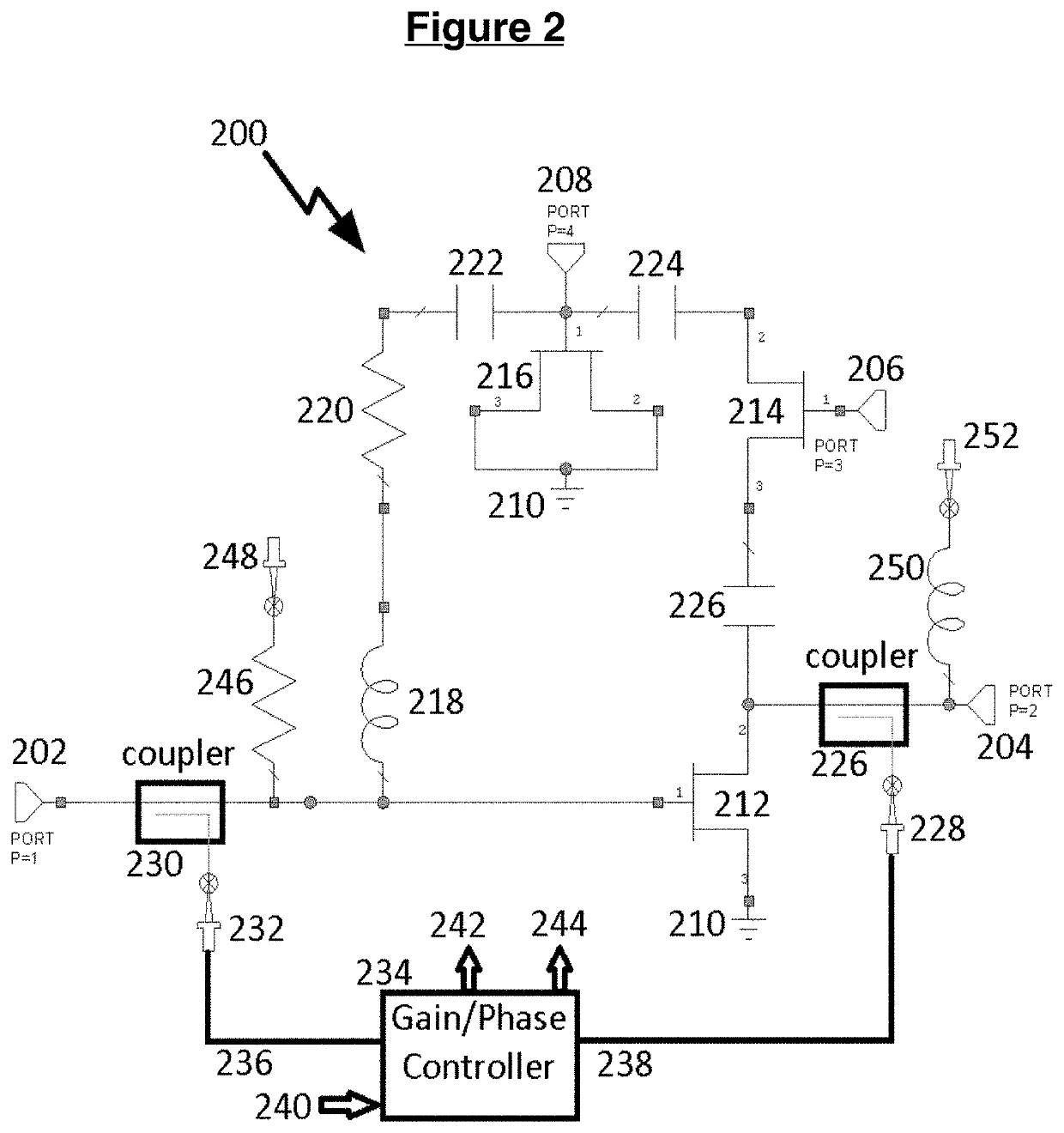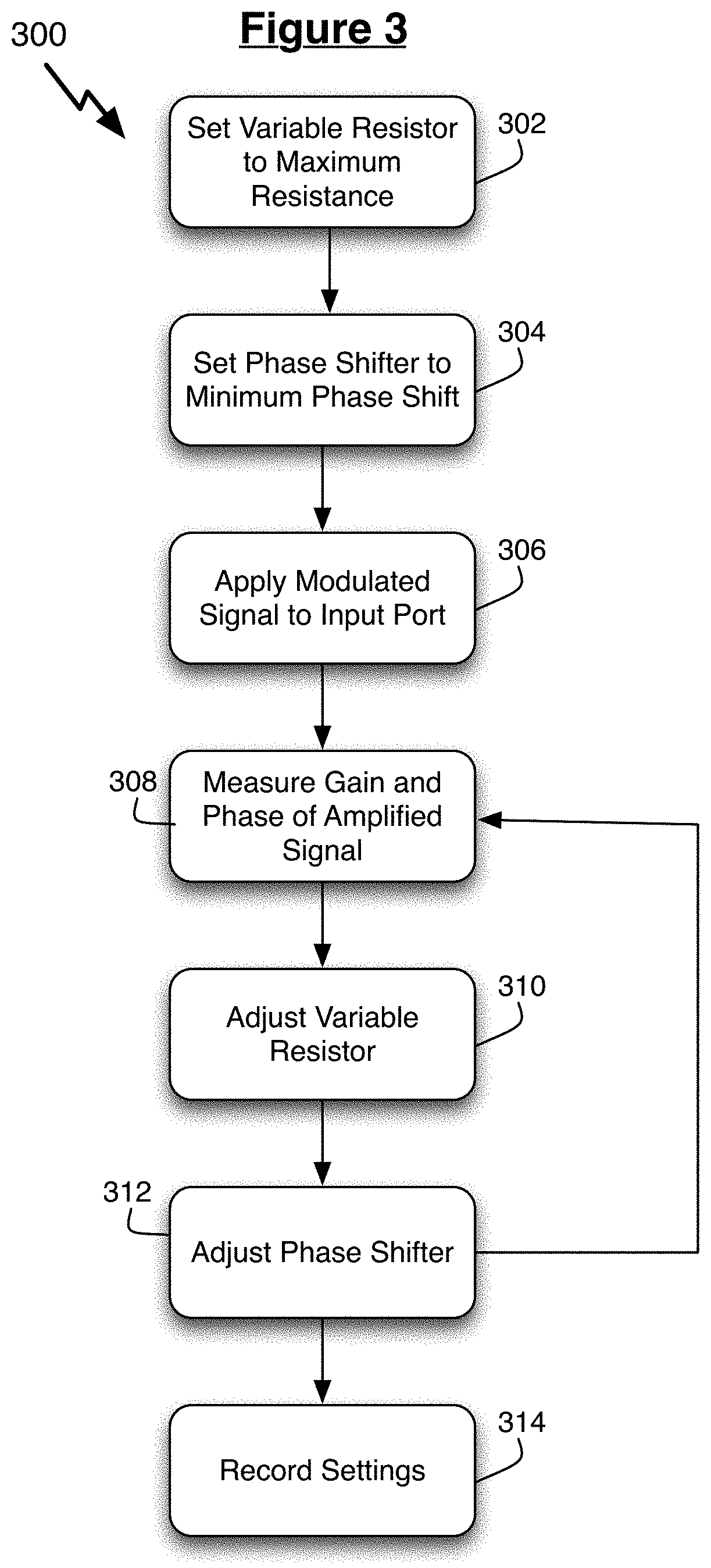Method and system for linearizing an amplifier using transistor-level dynamic feedback
a transistor-level dynamic feedback and amplifier technology, applied in the direction of amplifier modification to reduce non-linear distortion, gain control, amplifier control device circuits, etc., can solve the problems of limiting the power efficiency that can be obtained, distorted amplifier output signal, and amplifier's ability to provide gain often increasingly degrade, so as to achieve constant relative phase shift and constant gain factor
- Summary
- Abstract
- Description
- Claims
- Application Information
AI Technical Summary
Benefits of technology
Problems solved by technology
Method used
Image
Examples
Embodiment Construction
[0029]FIG. 1 shows an example of a circuit 100 for performing signal amplification. In circuit 100, amplifier 106 may be used to amplify input signals received via input port 102. The amplified signal may be received via output port 104. It is well known in the art that amplifiers often possess a linear range for amplification. For example, if input signals received by amplifier 106 via input port 102 are within such a linear range, then the amplified signal received via output port 104 will remain in linear proportion to the input signals (e.g., y=Gx, where y is the output signal, x is the input signal, and G is a constant gain factor supplied by amplifier 106). However, if such input signals exceed the linear range of amplifier 106, then the amplified signal received via output port 104 may exhibit nonlinear distortions.
[0030]For example, one nonlinear distortion is gain compression. As an input signal increases above the linear range, the ability of an amplifier to amplify the si...
PUM
 Login to View More
Login to View More Abstract
Description
Claims
Application Information
 Login to View More
Login to View More - R&D
- Intellectual Property
- Life Sciences
- Materials
- Tech Scout
- Unparalleled Data Quality
- Higher Quality Content
- 60% Fewer Hallucinations
Browse by: Latest US Patents, China's latest patents, Technical Efficacy Thesaurus, Application Domain, Technology Topic, Popular Technical Reports.
© 2025 PatSnap. All rights reserved.Legal|Privacy policy|Modern Slavery Act Transparency Statement|Sitemap|About US| Contact US: help@patsnap.com



